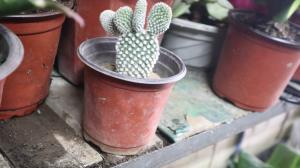Where to Place Your Aloe Vera Plant Outdoors
Introduction
Aloe vera plants are hardy succulents that are known for their health benefits and easy maintenance. While they can be grown indoors, placing them outside can also be beneficial. If you're considering putting your aloe vera plant outside, read on for tips on where to place it.
1. Sunlight
The first thing to consider when placing your aloe vera plant outside is sunlight. Aloe vera plants need plenty of sunlight to thrive, so finding a spot that gets at least six hours of direct sunlight each day is essential. However, it's important to note that too much sunlight can damage the leaves, so a shady spot or filtered light may be best for areas with intense sun.
2. Temperature
Aloe vera plants are native to hot, dry climates, so they can withstand high temperatures up to 100 degrees Fahrenheit. However, they can be damaged by frost and cold temperatures, so it's crucial to avoid areas that get too cold. If you live in a colder climate, it may be best to keep your aloe vera plant indoors during the winter months.
3. Soil
Aloe vera plants require well-draining soil, so it's essential to plant them in a container with drainage holes or in an area that has good drainage. If your soil is heavy and dense, consider adding sand or perlite to improve drainage. Also, make sure to avoid soil that has been treated with pesticides or chemicals, as they can harm the plant.
4. Protection
While aloe vera plants are sturdy and can tolerate most conditions, they still need protection from the elements. If you live in an area with high winds or frequent rain, consider placing your aloe vera plant in a sheltered area, such as a patio or covered porch. You can also protect the plant by placing it in a container with a saucer to catch excess water.
5. Other Considerations
When placing your aloe vera plant outside, consider other factors such as pets, children, and potential pests. Aloe vera plants are not toxic to pets, but they may be attractive to cats and dogs, so it's best to keep them out of reach. Additionally, children may be tempted to touch the spiky leaves, which can cause discomfort, so it's important to supervise them around the plant. To prevent pests such as mealybugs and spider mites, check the plant regularly and use an insecticidal soap if necessary.
Conclusion
If you want to put your aloe vera plant outside, finding the right spot is essential. With the right amount of sunlight, temperature, and soil, your aloe vera plant can thrive and provide you with its many health benefits. Just remember to protect it from the elements and keep an eye out for pests, and your aloe vera plant will be a beautiful addition to your outdoor space.

 how many times do yo...
how many times do yo... how many planted tre...
how many planted tre... how many pine trees ...
how many pine trees ... how many pecan trees...
how many pecan trees... how many plants comp...
how many plants comp... how many plants can ...
how many plants can ... how many plants and ...
how many plants and ... how many pepper plan...
how many pepper plan...






























